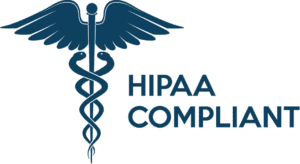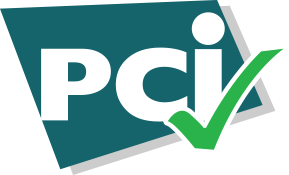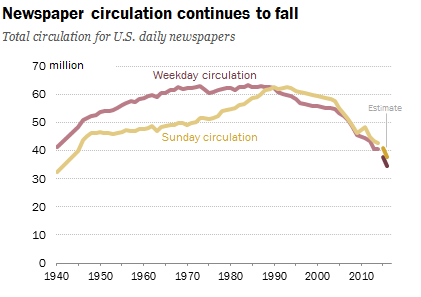
Savvy Pay Per Click Advertisers Are Staying With Google AdWords, Not Newspapers
While US President Donald Trump has criticized many US newspapers and alluded to their falling readership numbers, it has been ironic that interest in Mr. Trump himself has provided the newspaper industry with the “Trump Bump,” a recent boost to print and online subscriptions. That boost has, at least temporarily, masked a long-term decline in newspaper readership, as illustrated by the above graph from the Pew Research Center.
Sadly, advertising in the newspaper does not typically yield the best results for small to medium businesses (SMB). This was made clear by Mary Meeker’s Internet Trends Report, that she presented last week at Code Conference in Southern California.
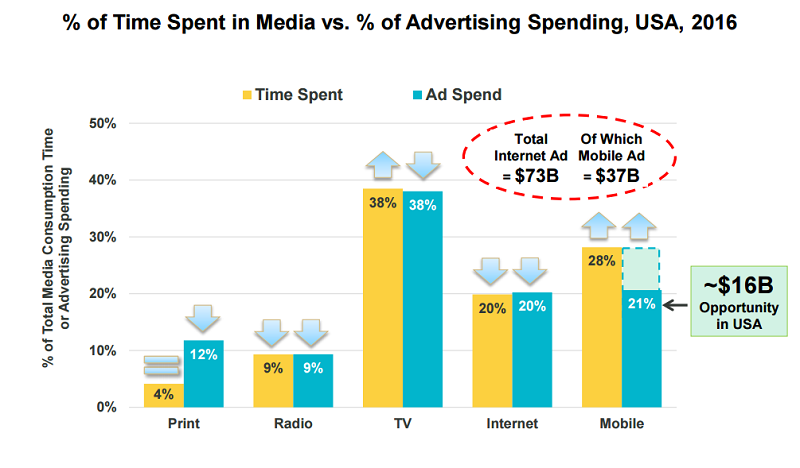

In the above slide, the yellow bars show the amount of time a consumer spends in media consumption, the blue bars advertising spend. The blue arrows show the trends, downward or upward. Notice that the yellow and blue bars are disproportionate for Print – a bad investment – and for Mobile, a major opportunity according to Dr. Meeker.
However, newspaper owners and their senior staff have been fast to see these trends and have not been lazy. They themselves have begun to offer online promotional contracts, including PPC management. These packages include options from creating traditional print and online advertorial pieces, to reselling geofencing, remarketing and personalization, the latter often wrapped up as “contextual marketing.”
Often ads on news sites will appear mixed in with news. Here is a screenshot from the USA Today site. Please note that the content will 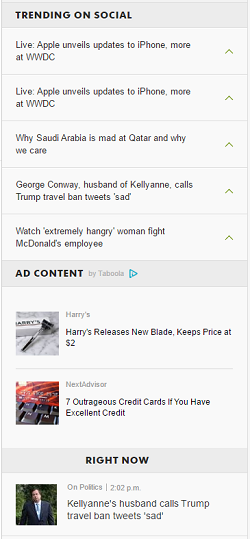

So why am I recommending that small to medium sized businesses stick with Google AdWords, Microsoft Bing and a professional PPC expert agency? Firstly, both AdWords and Bing Ads have partner agreements all over the internet, including with newspaper sites. Bing participates in Media.net while Google utilizes AdSense. You’ve seen their ads, but may not have realized where these ads come from. Bing and Google offer very granular, targeted geofencing and remarketing. They are masters at contextual marketing because they see their users’ online activities at all times – unless a user has actively blocked tracking, and very few people do. There is a great advantage to consumers in allowing tracking: it means that they tend to be served only articles and ads they are likely to be interested in. Hence, any PPC services you can get from a newspaper, you can already get from the market leaders. Secondly, to get access to your business’ target audience effectively, the newspaper will need to use Bing Ads, AdWords, or both, anyway. How do they monetize this activity? They add their own markup.
Finally, thinking back to Dr. Meeker’s slide, remember that mobile use is growing fast. What search engines are people using on mobile? On Android devices and Apple’s Safari, it’s almost always Google, while on Apple Siri devices the default search engine is Bing. When it comes to contextual granularity, the right ad, in the right site, at the right time, in geographically the right place, is going to yield the highest conversion rate and the highest purchase rate. Going to a reseller or vertical, such as a newspaper, is either going to serve the ads in non-optimized websites, times, locations etc. or is going to cost more because of the third-party markup.
If you’re managing the advertising for an SMB, you will get the highest return on your advertising spend by sticking with a PPC expert agency whose core competency is getting you the highest number of leads for the lowest cost.


